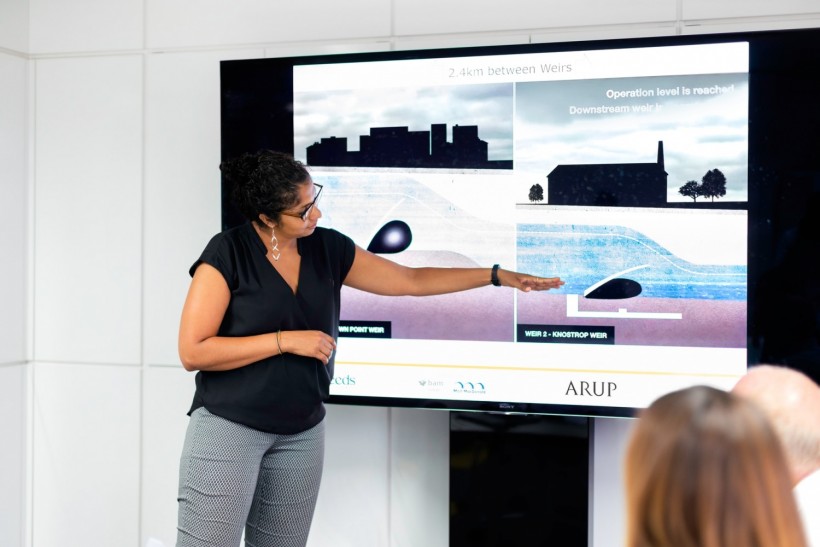How To Present Design Work For Your Client
The world would be a much easier place to live in if all you had to do was create a design, and that's it! But, as always, reality is a little bit trickier in this universe, and once you come up with a perfect design, you need to sell it to your client.
In other words, you need to prove to the client that you created the best solution to their task. But how can you do that? How to present design work to your client and do not get "no" for an answer?
We gathered some useful tips for designers that will allow them to have a perfect presentation, so if it is something you are interested in, keep reading.

Study the audience
Even before the day of the design work presentation, you need to start your preparations by learning about the people you will present your work to. Who they are, what their preferred style of presentation is, and how you can impress them.
If you, for example, present an interior design project for a top manager in the bank, they most likely would prefer a more structured, fast, and full of short facts presentation. On the other hand, the same interior design project presented to a creative person can be explained in a lot more detail.
But do not assume anything: everyone is different, and a creative fella can ask for a formal presentation, and a top manager can want a more relaxed approach. Do your research, and then decide on your style.
Explain how you come up with the design
Start your project presentation by explaining the roots of your design idea. Use details of your research and how you started and finished the creating process.
Explain what inspired you, how the finished design embodies your idea and how it connects with the client's wants. You can use early sketches to show what you have thought of first and what you have in the result.
However, always remember who you are talking to, and if the client prefers shorter and formal presentations, do not push the creative side of things on them.
Sometimes, if it fits our presentation, we also use other works from our portfolio to better illustrate the thought process and how the finished design fulfills the client's requirements. But do not overuse it: only when it fits the situation perfectly.
Use video presentation
It is not just a cliche saying that one picture says more than a thousand words. It is true, and it evolved into saying that one video can replace a thousand pictures.
So, we are absolutely sure that to present your project well, you need to go with a video presentation. It can sound really hard to do, but thanks to thousands of presentation templates available online, it is not much harder than doing the regular one.
To be safe, we recommend you save your finished presentation on multiple resources and even learn how to convert video to MP4 to have a unified video format. This is useful in case you have to share the presentation to different hardwares. So, the MP4 version always plays well on everything today.
And the last thing that can make your presentation even more powerful is using 3D printing to create a model of your design. You will get an actual thing your clients can touch and look at from different angles, so if your budget allows, do it!

Ask for questions and carefully listen to feedback
After the presentation, you need to communicate with customers and know what they think. Your presentation itself can be impeccable, but the design is something your client didn't expect to get. Listen to their thoughts and even make notes if needed.
It doesn't matter if you are a guru of design, and a logo, website mockup, garden plan, or office design you presented is the best work you've ever created; the client is always right, and they have their expectations.
If it is possible, give the answers to the client's questions and offer solutions to any problems right away to prevent misunderstandings and provide the client a feeling that you understand them. After everyone has shared their opinions, summarize the feedback and let the client know what you plan to do about it.
Remember that you need to make your client happy, but you still can sometimes say your word against their ideas, and we will talk about it in the next part.
Be flexible, but put your foot down if needed
You are a professional, and you do this job for a client. So, their opinion matters a lot, but if you know that what they are asking for is unreasonable, say it. But not just say "no," explain it.
We perfectly understand how easy and effortless some things can look from a non-professional point of view, and your job here is to show your client what things can be done and what can't.
If your client rejects your arguments and tries to push in on you, try to use a psychological trick and give them a choice only between two options that secretly both fit your plan. It can help to move forward the negotiation process and come up with a compromise.
Conclusion
Presenting your work is very hard. This project is your baby, and you absolutely would love it if your client understood it and loved it too. But the result here depends only on you.
Creating a good, preferably video presentation will allow you to show all the aspects of your hard work, how you came to this place and what you want your client to see in it. It will guarantee smashing success for your project and a satisfied client in the end.
* This is a contributed article and this content does not necessarily represent the views of sciencetimes.com












![Sat-Nav in Space: Best Route Between Two Worlds Calculated Using 'Knot Theory' [Study]](https://1721181113.rsc.cdn77.org/data/thumbs/full/53194/258/146/50/40/sat-nav-in-space-best-route-between-two-worlds-calculated-using-knot-theory-study.png)

